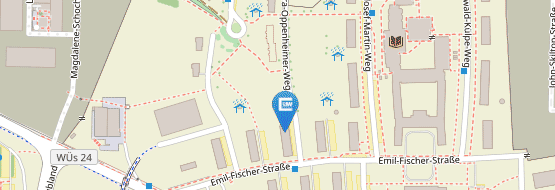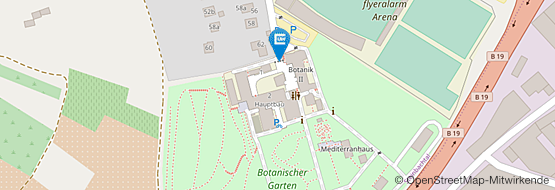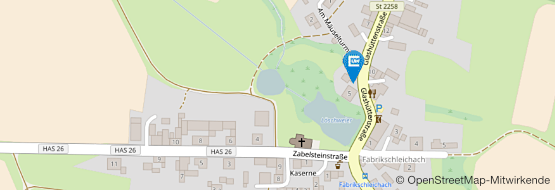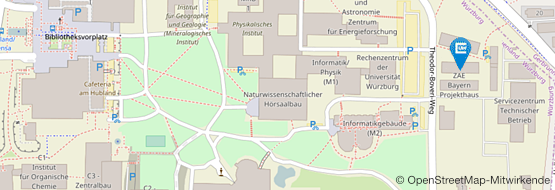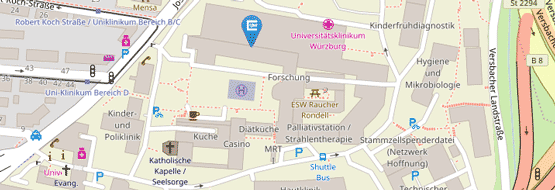Markus Engstler
Panta rhei
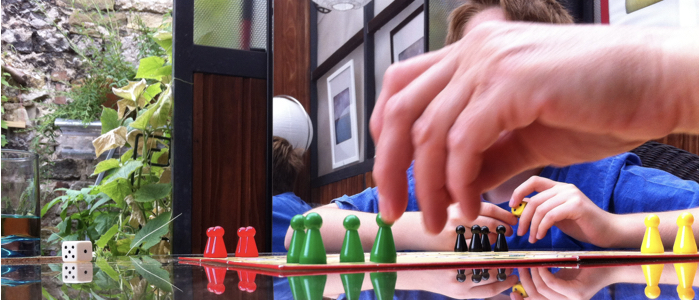
Lehrstuhl für Zell- und Entwicklungsbiologie
Theodor-Boveri-Institut
Biozentrum der Universität Würzburg
Am Hubland
97074 Würzburg
Fon & Fax
+49 931 3184250 (Manuela Engert & Miriam Weidauer)
+49 931 3180060 (Markus Engstler)
zeb(at)uni-wuerzburg.de (Uli Borst & Manu Engert)
markus.engstler(at)uni-wuerzburg.de
Markus Engstler
... is a molecular cell biologist with substantial interest in infection biology and (bio)physics. He graduated from Christian Albrecht University of Kiel where he also received a doctorate in biochemistry. Markus spent his postdoctoral time at The Rockefeller University (New York) and the Max Planck Institute of Biochemistry (Martinsried). He further developed his quantitative approaches to study cells as a project group leader at the Free University of Berlin and the Ludwig Maximilian University of Munich. Following habilitation in Genetics (LMU Munich), he was appointed Professor of Genetics at Darmstadt University of Technology. Since 2009, Markus Engstler is Professor and Chair of the Department of Cell and Developmental Biology at the Julius-Maximilians-University of Würzburg. Among other duties, he continues to act as a member of numerous scientific advisory boards, as well as an editor for several journals. He is member of the board of the Forum Africa Centre (FAZ) and the Wilhelm Conrad Röntgen-Center for Complex Material Systems (RCCM). He has served as dean and vice-dean of faculty, and is founding director of the Center for Computational and Theoretical Biology (CCTB). Markus Engstler is also a founding member of DNTDs, the German Network Against Neglected Tropical Diseases. He is acting president of the German Society for Parasitology (DGP). Since 2021, Markus Engstler is speaker of the DFG priority programme SPP 2332 "Physics of Parasitism". He is currently also Dean of Studies at the Faculty of Biology in Würzburg and was awarded the Memento Research Prize 2022 for Neglected Diseases. In May 2025, Markus was elected president of the German Life Sciences Association (VBIO).
since 2009 Chair and Professor of Cell and Developmental Biology, University of Würzburg
2006 - 2009 Professor of Genetics, Technical University, Darmstadt
2004 Habilitation, LMU Munich
2001-2004 Research Project Leader, LMU Munich
1998-2001 Senior Staff Scientist, Free University of Berlin
1996-1998 Postdoc, MPI Martinsried
1994-1996 Postdoc, The Rockefeller University, New York
1994-1999 DKFZ postdoctoral fellow
1994 Dr. rer. nat, University of Kiel
Research synopsis
We have been using African trypanosomes as a cell biology model for 30 years. Early biochemical work unraveled trans-sialylation, a novel mechanism of protein glycosylation, which was later shown to be critically involved in pathogenesis. Research on the control of parasite development led to new paradigms for the molecular basis of trypanosome stage differentiation. Cold-shock and chemical sensing function cooperatively in the initiation of stage transition and the routing of the major surface coat proteins is differentially regulated throughout the parasite’s life cycle. The characterization and mapping of the endocytic recycling pathways in T. brucei using quantitative fluorescence and EM methods has paved the way for trypanosomes to become a more generally accepted model system. The kinetics of plasma membrane recycling is extremely fast and the parasites harbour morphologically and functionally well-defined endosomes. A novel mechanism for the sorting of GPI-anchored proteins appears to be present (not only) in trypanosomes. This work also suggested that rapid endocytosis could be essential for trypanosome survival. The parasites continuously swim and thereby generate directional flow fields on their cell surface. These flow forces become functional when the surface coat, which is dominated by variant surface glycoproteins (VSG), is attacked by host immunoglobulins. Hydrodynamic forces drag antibody-VSG complexes towards the rear of the cell, where they are endocytosed. Thus, pure physical forces can sort proteins in the plane of the plasma membrane.
Antibody clearance raised the question how trypanosomes actually swim and if this phenomenon is functional in natural infection. This could only be addressed in collaboration with partners in Africa on the one hand, and physicists and mathematicians on the other hand. Trypanosomes reveal an amazingly complex motion behaviour in vitro and in the diverse and crowded environments of the host. Different trypanosome species have adapted to distinct infection niches, such as the circulation or tissue spaces. And the parasites not only swim in the mammal, but also in the insect vector, where they form giant swarms. These studies on trypanosome motility have brought us into the field of active matter, bridging cell biology and theoretical physics.
We have shown that trypanosomes are dynamic across multiple scales. The first complete structures of VSGs revealed unexpected molecular flexibility, which explains the presence of VSG populations with different diffusion dynamics on the cell surface. Overcrowding of the VSG coat triggers rapid shedding of nanotubes and nanovesicles - driven purely by physical forces.
To measure, analyze, and understand the dynamics of VSGs, other membrane proteins, and associated lipids, we built a 3D single-particle tracking (SPT) microscopy setup. This included the development of dedicated software for analyzing 3D single-molecule trajectories - no small feat, given that the relevant cellular volume is just 6 × 3 × 4 µm.
This work prompted us to revisit the exceptionally fast bulk membrane flow during trypanosome endocytosis. Using 3D Tokuyasu immunoelectron microscopy combined with SPT, we demonstrated that the endosome in trypanosomes forms a single, giant, convoluted and continuous membrane system. This system not only displays all hallmark features of a canonical eukaryotic endosome but also performs many functions typically associated with the Golgi apparatus.
We are now investigating the composition and localization of membrane lipids in trypanosomes, which appear to be highly regulated. Moving forward, one major focus will remain on membrane trafficking in our model parasite, while another will address the mechanical forces acting within, on, and around various trypanosome species. We hypothesise that mechanical adaptations help trypanosome species avoid interspecies competition within the same host. This work is being pursued as within the DFG Priority Programme SPP 2332: Physics of Parasitism.
Recent Publications (selection)
Subcellular dynamics in unicellular parasites. Müller T, Krüger T, Engstler M. Trends Parasitol. 2025 Mar;41(3):222-234. doi: 10.1016/j.pt.2025.01.007. Epub 2025 Feb 10. PMID: 39933989.
ThirdPeak is a flexible tool designed for the robust analysis of two- and three-dimensional tracking data. Müller T, Meiser E, Engstler M. Commun Biol. 2024 Dec 20;7(1):1683. doi: 10.1038/s42003-024-07378-w. PMID: 39702822; PMCID: PMC11659616.
The actomyosin system is essential for the integrity of the endosomal system in bloodstream form Trypanosoma brucei. Link F, Jung S, Malzer X, Zierhut F, Konle A, Borges A, Batters C, Weiland M, Poellmann M, Nguyen AB, Kullmann J, Veigel C, Engstler M, Morriswood B. Elife. 2024 Nov 21;13:RP96953. doi: 10.7554/eLife.96953. PMID: 39570285; PMCID: PMC11581428.
Continuous endosomes form functional subdomains and orchestrate rapid membrane trafficking in trypanosomes. Link F, Borges A, Karo O, Jungblut M, Müller T, Meyer-Natus E, Krüger T, Sachs S, Jones NG, Morphew M, Sauer M, Stigloher C, McIntosh JR, Engstler M. Elife. 2024 Apr 15;12:RP91194. doi: 10.7554/eLife.91194. PMID: 38619530; PMCID: PMC11018342.
Vector-borne Trypanosoma brucei parasites develop in artificial human skin and persist as skin tissue forms. Reuter C, Hauf L, Imdahl F, Sen R, Vafadarnejad E, Fey P, Finger T, Jones NG, Walles H, Barquist L, Saliba AE, Groeber-Becker F, Engstler M. Nat Commun. 2023 Nov 23;14(1):7660. doi: 10.1038/s41467-023-43437-2. PMID: 37996412; PMCID: PMC10667367.
Gene editing and scalable functional genomic screening in Leishmania species using the CRISPR/Cas9 cytosine base editor toolbox LeishBASEedit. Engstler M, Beneke T. Elife. 2023 May 24;12:e85605. doi: 10.7554/eLife.85605. PMID: 37222701; PMCID: PMC10208639.
The Intracellular Amastigote of Trypanosoma cruzi Maintains an Actively Beating Flagellum. Won MM, Krüger T, Engstler M, Burleigh BA. mBio. 2023 Apr 25;14(2):e0355622. doi: 10.1128/mbio.03556-22. Epub 2023 Feb 22. PMID: 36840555; PMCID: PMC10128032.
Nanobody-mediated macromolecular crowding induces membrane fission and remodeling in the African trypanosome.
Hempelmann A, Hartleb L, van Straaten M, Hashemi H, Zeelen JP, Bongers K, Papavasiliou FN, Engstler M, Stebbins CE, Jones NG.
Cell Rep. 2021 Nov 2;37(5):109923. doi: 10.1016/j.celrep.2021.109923. PMID: 34731611
Unexpected plasticity in the life cycle of Trypanosoma brucei.
Schuster S, Lisack J, Subota I, Zimmermann H, Reuter C, Mueller T, Morriswood B, Engstler M.
Elife. 2021 Aug 6;10:e66028. doi: 10.7554/eLife.66028. PMID: 34355698
Single-cell motile behaviour of [Formula: see text] in thin-layered fluid collectives.
Krüger T, Maus K, Kreß V, Meyer-Natus E, Engstler M.
Eur Phys J E Soft Matter. 2021 Mar 23;44(3):37. doi: 10.1140/epje/s10189-021-00052-7. PMID: 33755816




